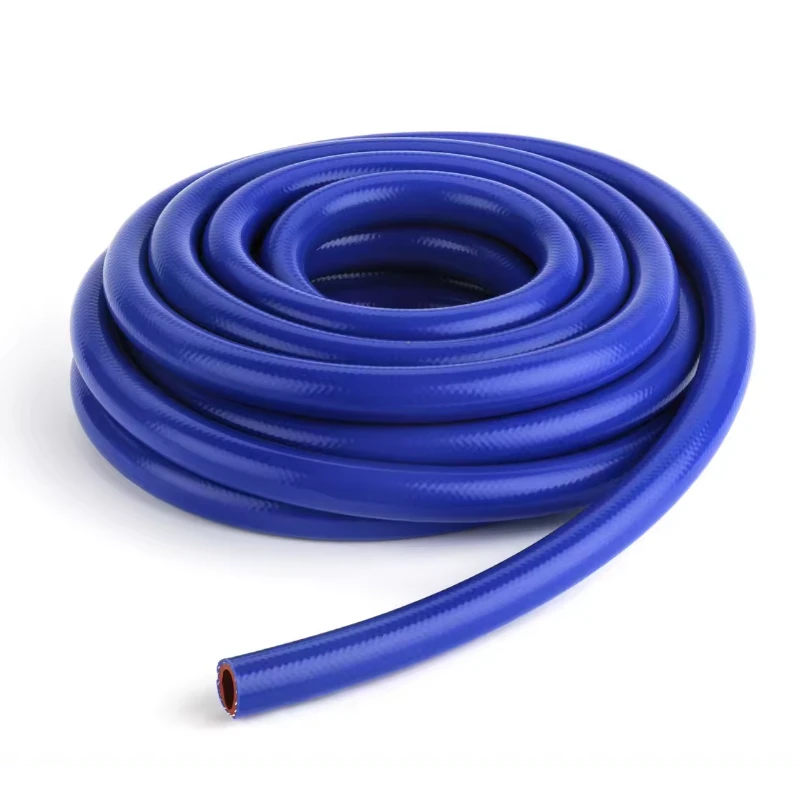Silicone Hose
Our high-performance silicone hoses are engineered for durability, flexibility, and reliability under the most demanding conditions. Manufactured from premium-grade silicone and reinforced with high-strength polyester or aramid fabric, these hoses provide excellent resistance to extreme temperatures, pressure, UV radiation, and chemical exposure. They maintain structural integrity from -60°C to +260°C, making them ideal for automotive, industrial, and marine applications.
Silicone hoses offer superior flexibility compared to rubber alternatives, allowing easier installation in tight or complex engine bays. Their non-reactive, inert properties ensure minimal degradation over time, even in harsh environments with oil, coolant, or ozone exposure. The smooth inner surface helps optimize flow and reduce turbulence in fluid or air systems, improving overall efficiency.
Each hose is precision-molded to meet or exceed OEM specifications, ensuring a perfect fit and long-term performance. Available in a wide range of sizes, colors and configurations—including straight, elbow, reducer and vacuum lines—our silicone hoses support both custom builds and direct replacements.
Whether used in turbocharged systems, intercooler piping, radiator connections or industrial fluid transfer, our silicone hoses deliver exceptional performance and long-lasting reliability. Designed to meet the needs of performance enthusiasts and industry professionals alike, they combine strength and aesthetics in a single solution.
Is Silicone Hose Heat Resistant?
Yes, silicone hose is well-known for its excellent heat resistance, which makes it a preferred choice in high-temperature applications across automotive, industrial, and aerospace sectors. Made from high-quality silicone rubber and reinforced with fabric materials such as polyester or aramid, silicone hoses can withstand continuous temperatures ranging from -60°C to +260°C (-76°F to 500°F). In short bursts, some specialized silicone hoses can even tolerate higher temperatures.
This impressive thermal stability means silicone hoses remain flexible and durable even when exposed to extreme heat. Unlike traditional rubber hoses, which can become brittle, crack, or degrade over time, silicone hoses maintain their integrity, helping prevent leaks, failures, or performance losses in hot environments. This makes them ideal for use in engine bays, turbocharger systems, radiator and heater connections, and other high-heat zones.
Additionally, silicone is chemically inert and does not easily react with oils, coolants, or other fluids commonly found in engines and machinery. Its heat resistance is complemented by its resistance to ozone, UV radiation, and weathering, contributing to a long service life even under challenging operating conditions.
Because of these properties, silicone hoses are widely used in performance vehicles and heavy-duty machinery that require thermal reliability. Whether you're upgrading a high-performance engine or ensuring safety in industrial systems, silicone hoses offer dependable heat resistance and superior longevity.
Can You Use Silicone for Fuel Hose?
Silicone hose is not recommended for use with fuel or oil-based products. While silicone has excellent heat resistance, flexibility, and durability, it is chemically incompatible with most petroleum-based fuels and oils. Over time, exposure to gasoline, diesel, or motor oil can cause silicone to swell, soften, or degrade, leading to hose failure and potential safety hazards.
Silicone is an inert and stable material under high temperature and pressure, which makes it ideal for coolant, air, and vacuum lines. However, it lacks the necessary chemical resistance required for fuel systems. When exposed to hydrocarbons, the silicone structure begins to break down, compromising both the mechanical integrity and sealing performance of the hose.
For fuel-related applications, specialized hoses made from materials like nitrile rubber (NBR), fluorocarbon (FKM/Viton), or PTFE (Teflon) are much more suitable. These materials are specifically designed to resist chemical attack from gasoline, ethanol blends, biodiesel, and oil-based substances, ensuring long-term reliability and safety.
Using the wrong type of hose in a fuel system can lead to leaks, fire risk, and costly engine damage. That’s why manufacturers and automotive experts strongly advise against using silicone hoses for any direct fuel transfer or fuel vapor handling. While silicone hoses may look similar to fuel-rated hoses, their performance under chemical exposure is significantly different.
In summary, silicone hoses should *only* be used for non-petroleum fluids like coolant or air. Always choose a hose rated specifically for fuel when dealing with gasoline or oil systems.





